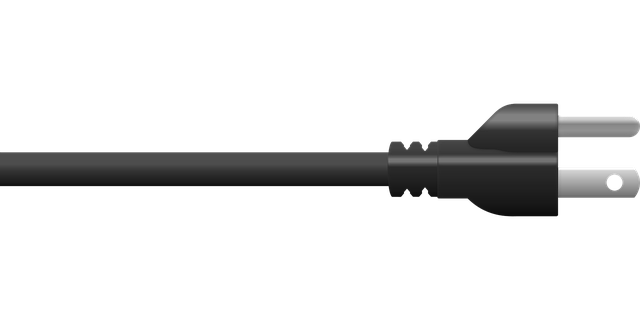Internal linking, powered by SEO internal links plugins, is a strategy to boost user experience and search engine rankings. These plugins simplify link creation, offering intuitive interfaces for backlink generation, natural flow structuring, and website architecture improvement. By integrating related content, they enhance navigation, reduce bounce rates, and increase engagement, ultimately improving page authority, crawlability, and organic traffic. Effective plugins should have automated suggestions, easy anchor text generation, and analytics tracking for a comprehensive SEO strategy.
“Unleash the power of internal linking to boost your website’s performance! This beginner’s guide explores the fundamentals of SEO internal links, offering a comprehensive roadmap for success. We delve into the benefits of strategic linking, from enhancing user experience to improving search engine rankings. Learn how the right SEO internal links plugin can simplify implementation and optimization. Get ready to navigate your site’s structure effectively and see tangible results.”
- Understanding Internal Links: Basic Concept
- SEO Benefits of Strategic Linking
- Choosing the Right SEO Internal Links Plugin
- Implementing Internal Links on Your Website
- Optimizing for User Experience and Search Engines
- Measuring Success: Tracking Internal Link Performance
Understanding Internal Links: Basic Concept

Internal linking is a fundamental strategy in search engine optimization (SEO) that involves creating hyperlinks between pages within your website. These connections serve as digital bridges, guiding users and search engines alike from one relevant page to another. By implementing an effective internal linking structure, you enhance the overall user experience by enabling seamless navigation through your site’s content.
An SEO internal links plugin can be a beginner’s best friend in this process. It simplifies the task of identifying relevant pages for interlinking, suggesting strategic anchor text, and automatically generating high-quality backlinks. These plugins often provide an intuitive interface, allowing users to create a natural flow of connections that reflect the hierarchy and relevance of your content. With just a few clicks, you can transform your website’s architecture, making it more crawlable and improving its chances in search engine rankings.
SEO Benefits of Strategic Linking

Internal linking is a powerful strategy that offers significant advantages for search engine optimization (SEO). When you implement strategic SEO internal links within your website, you create a network of connections that helps both users and search engines understand the hierarchy and relevance of your content. This simple yet effective technique improves user experience by allowing visitors to navigate through related articles effortlessly, encouraging them to explore more pages on your site. As a result, bounce rates tend to decrease, leading to higher engagement and better conversion rates.
Using an SEO internal links plugin can streamline this process. These plugins often come with features like automatic anchor text generation, easy-to-use interfaces, and customizable link placements, making it simpler for beginners to create effective internal linking structures. By following a simple SEO internal links tutorial or incorporating some basic SEO internal links tips, websites of any size can benefit from improved page authority, better crawlability, and increased organic traffic—all essential aspects of successful SEO strategies.
Choosing the Right SEO Internal Links Plugin

When it comes to enhancing your website’s SEO with internal linking, selecting the right tool is a crucial step. An SEO internal links plugin can streamline this process and significantly improve your site’s visibility on search engines. Look for plugins that offer an intuitive interface, allowing beginners to effortlessly identify relevant pages for linking without needing an extensive SEO internal links tutorial.
Consider features like automated link suggestions based on your content’s topic, easy-to-use anchor text generation, and analytics tools to track the effectiveness of your internal linking strategy. These capabilities ensure you can create a comprehensive SEO internal links strategy and implement valuable tips without overwhelming technical complexity.
Implementing Internal Links on Your Website

Implementing internal links on your website is a crucial step in enhancing user experience and boosting your SEO strategy. These links play a vital role in guiding users through your site, ensuring they can navigate with ease while discovering relevant content. A simple yet effective method is to utilize an SEO internal links plugin that simplifies the process of creating and managing these links. Such plugins offer a user-friendly interface, allowing you to seamlessly integrate links within your content, improving both readability and search engine visibility.
When optimizing your site for internal links, consider a strategic approach. Implement a clear linking structure by connecting relevant pages within your website. This SEO internal links tutorial suggests focusing on creating high-quality backlinks that point to valuable resources. By following these tips, you can ensure your internal link profile is diverse and natural, contributing to better SEO internal links optimization overall.
Optimizing for User Experience and Search Engines

Optimizing for user experience (UX) and search engines go hand in hand when implementing effective SEO internal links. A well-structured internal linking strategy enhances both UX and search engine visibility. When users navigate a website with ease, they are more likely to stay longer, explore more pages, and interact with the content. This behavior signals to search engines that your site provides valuable information, leading to better rankings over time.
Using an SEO internal links plugin can streamline this process significantly. These plugins often offer intuitive interfaces, allowing beginners to quickly create relevant backlinks within their content. By following best practices for SEO internal links tutorial guidelines and tips, users can ensure their links are contextual, beneficial for readers, and aligned with the website’s overall SEO strategy. This approach not only helps search engines understand your site’s structure but also keeps visitors engaged by providing them with valuable, interconnected resources.
Measuring Success: Tracking Internal Link Performance

Measuring success is a crucial step in understanding the impact of your SEO internal links strategy. Using an SEO internal links plugin can help track the performance of your internal linking efforts, providing valuable insights into click behavior and user engagement. These plugins offer detailed analytics, allowing you to identify high-performing pages and content that attract organic traffic. By analyzing click-through rates (CTRs) and time spent on page, you can optimize your SEO internal links tips and create a more engaging user experience.
Regularly monitoring these metrics enables you to refine your SEO internal links optimization strategy. For instance, if certain articles or blog posts consistently have high CTRs, consider enhancing their content or promoting them through social media. Conversely, pages with low engagement might require updates or the addition of relevant internal links to make them more valuable and interlinked within your site’s tapestry.
